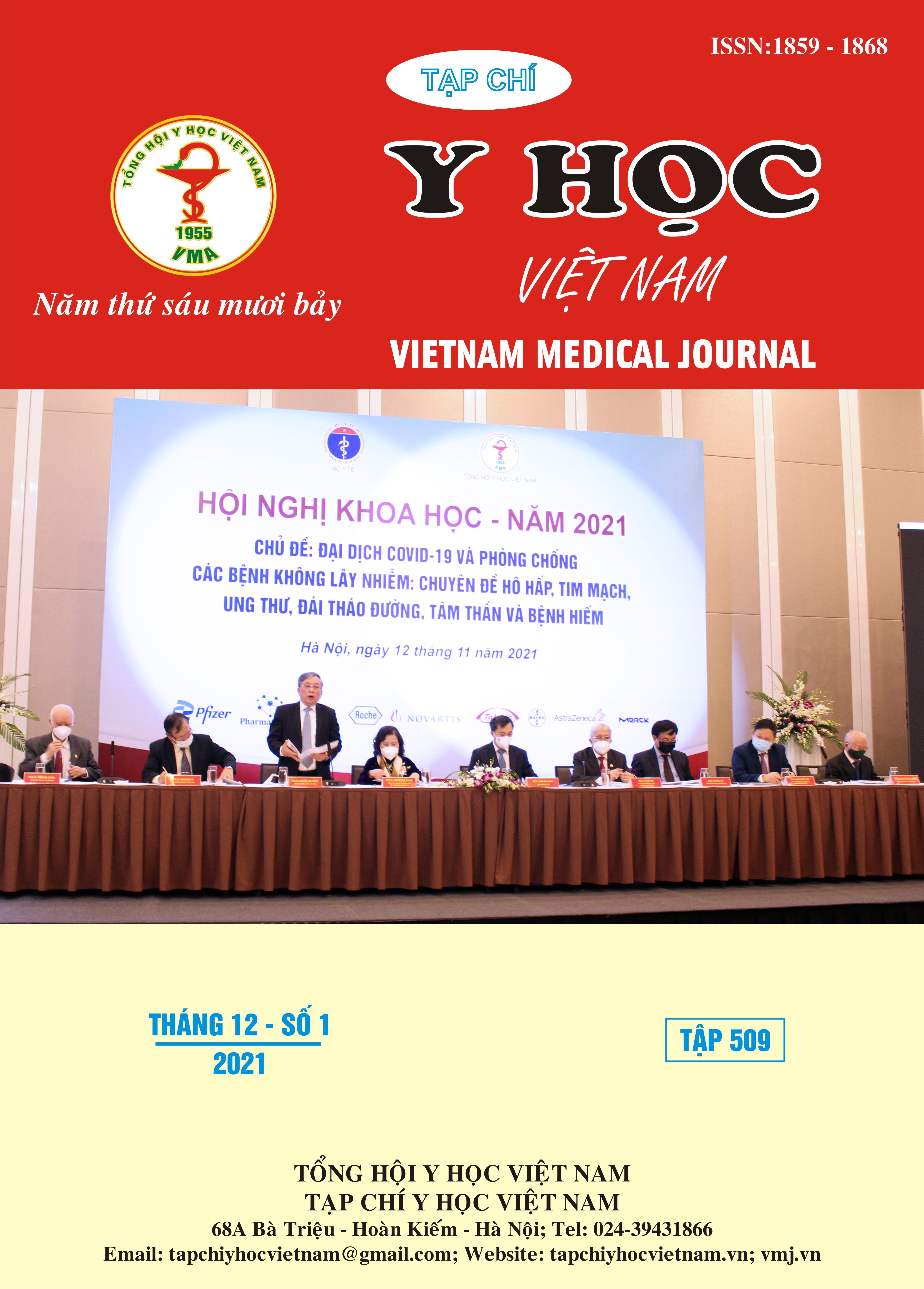CHARACTERISTICS OF POLYPOIDAL CHOROIDAL VASCULOPATHY EVALUATED BY OPTICAL COHERENCE TOMOGRAPHY ANGIOGRAPHY
Main Article Content
Abstract
Purpose: Characteristics of Polypoidal Choroidal Vasculopathy (PCV) evaluated by Optical coherence tomography angiography. Materials and methods: analysis all the patients diagnosed PCV in ophthalmology department of National Geriatric Hospital from 8/2020 – 8/2021. Results: Twenty eight eyes of 28 patients ( 17 male, 11 female) were verified in ICG. Average age was 61,07 ± 8,41 years (max 80 years, min 44 years). ICGA detected PL in all eyes (100%), whereas OCTA detected PL in 17 eyes (60,7%); ICGA detected BVN in 14 eyes (50%), whereas OCTA detected BVN in 16 eyes (57,1%). All of the BVNs detected by OCTA were located between the RPE and Bruch’s membrane. The mean PA in ICGA and OCTA (OCTA+ and ICGA+) was 0,47±0.31mm2 and 0.17±0.16mm2. Conclusion: ICG is the gold standard in the diagnosis of PCV, using OCTA without dye injection may be useful to monitor progression or recurrence. OCTA might detect more BVNs and fewer PLs compared with ICGA, and PL detected by OCTA might be smaller than those detected by ICGA.
Article Details
Keywords
Polypoidal choroidal vasculopathy, indocyanine green angiography, Spectral-domain OCT, Optical coherence tomography angiography
References
2. Cackett P, Wong D, Yeo I. A classification system for polypoidal choroidal vasculopathy. Retina. 2009;29(2):187-191.
3. Seong S, Choo HG, Kim YJ, et al. Novel Findings of Polypoidal Choroidal Vasculopathy via Optical Coherence Tomography Angiography. Korean journal of ophthalmology : KJO. 2019;33(1):54-62.
4. Kawamura A, Yuzawa M, Mori R, Haruyama M, Tanaka K. Indocyanine green angiographic and optical coherence tomographic findings support classification of polypoidal choroidal vasculopathy into two types. Acta ophthalmologica. 2013;91(6):e474-481.
5. Tomiyasu T, Nozaki M, Yoshida M, Ogura Y. Characteristics of Polypoidal Choroidal Vasculopathy Evaluated by Optical Coherence Tomography Angiography. Investigative ophthalmology & visual science. 2016;57(9):OCT324-330.
6. Chaikitmongkol V, Cheung CMG, Koizumi H, Govindahar V, Chhablani J, Lai TYY. Latest Developments in Polypoidal Choroidal Vasculopathy: Epidemiology, Etiology, Diagnosis, and Treatment. Asia-Pacific journal of ophthalmology (Philadelphia, Pa.). 2020;9(3):260-268.
7. Hwang DK, Yang CS, Lee FL, Hsu WM. Idiopathic polypoidal choroidal vasculopathy. Journal of the Chinese Medical Association : JCMA. 2007;70(2):84-88.


